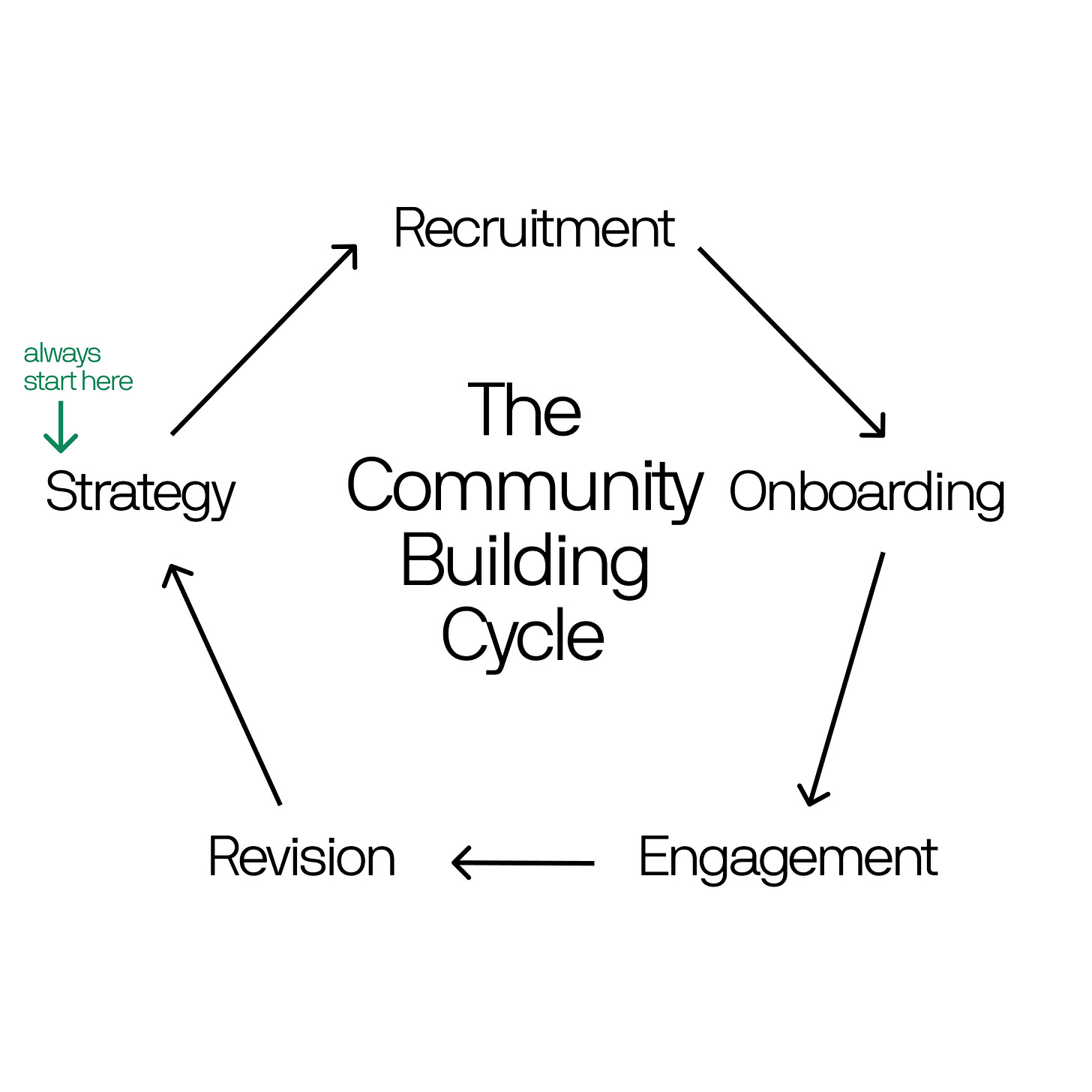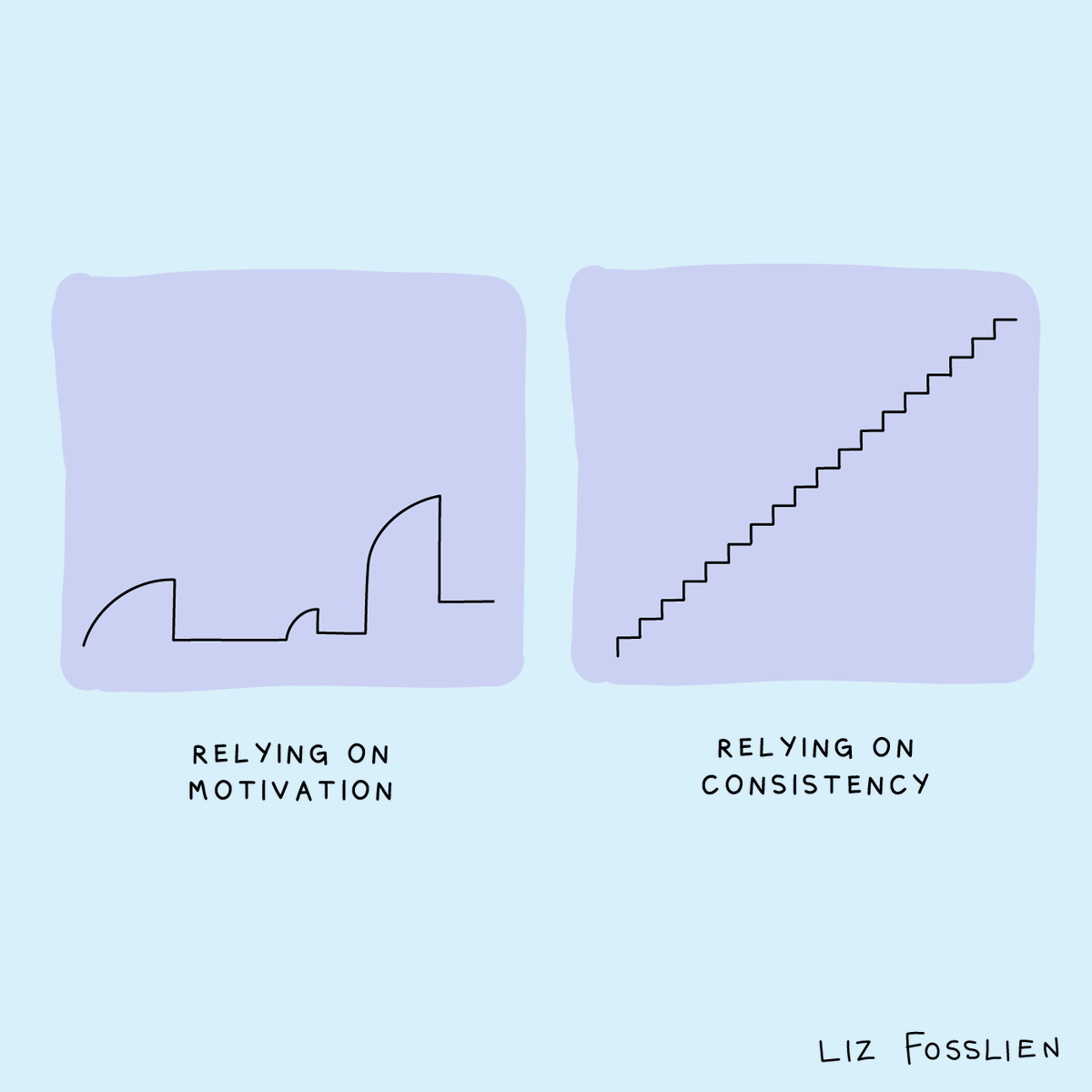Hi, I’m Emilie, and I’m launching this newsletter, Connection Engine, to discuss reflections and lessons on community building in a digital world. If you’re a community builder or just curious about community work, you can join the fun by subscribing below!
People are strange. People are also cool. People are complex. But above all, people are weirdos. That’s what makes community work so fun. Jono Bacon says, “if we really want to understand communities and how to build them, we need to understand people and how they work.”
We all live on a giant rock hurtling through space in a brief moment in time. Our lives are a blink in history. One of my favorite quotes is from a play called Evam Indrajit:
“The audacious assertion of life claims immortality in its brief spark.” - Badal Sircar
And yet, in our fleeting time, we explore, we build, we imagine, we grow, we love. We do weird stuff and we connect with other weird people. There is no manual for community, because there is no manual for weird human connection. There is something unspoken and indescribable about relationships that endure where others fail. While you can’t force these relationships, you can create an environment conducive to the feeling of human belonging we all need.
One of the most important questions community builders face is how they will encourage engagement in their communities at all levels. If designed well, engagement should start to organically happen on its own over time. But in the beginning, the community designer will likely be sending the majority of the first messages, encouraging discussion, and nudging others to participate all by crafting a wonderful member journey.
The member journey
I introduced the Community Building Cycle in my last issue.
While a very simplified version of the community design process, it shows the member journey, from recruitment to engagement, and maps out the community manager’s role in constantly building upon things learned from previous processes (and evolving the process as the community grows).
Once a member is onboarded, the next step of the Community Building Cycle is very important: Engagement. If you lose a member at this step, you could be losing a member for good.
Your job as community manager is to constantly create an adventure for your community. Show some appreciation, sprinkle in some magical moments, and make sure your members feel both the value they’re putting in, and the value they’re getting out of the space.
It’s important to note that there are no quick hacks to engagement — building things takes time. There are things you can do though to build the kind of environment where engagement thrives.
It all starts with the first contribution.
The first contribution
In my experience, I can’t stress enough how important a member’s first contribution to the community is. The onboarding process should already make it extremely easy for the member to engage — and now it is your job as the community builder to make sure that contribution doesn’t go unnoticed and unappreciated, especially in the early days.
These early members are taking a leap of faith and investing their time to build with you. Whether it’s posting something, asking a question, or sending an intro, it is crucial that the member feels welcome and supported from day one of their journey in the space you created.
Some things you can do:
Set up a channel in your community to celebrate first contributions
Send a personal note or message
Create a flow where a first contribution triggers something else (such as an email), but the member is notified upon adding something
Send a welcome package + letter
A member’s first contribution is the first brick in the city you’re building together. Without that foundation, your community is a house of cards. Don’t underestimate its importance. Garden the future of your community by showing appreciation early and showing it often.
Establishing rituals
Once a member reaches the first step in the community journey, the adventure should only continue from there. Members will build up confidence, learn their way around your community, and start to set the tone and vibes for the space, which will in turn attract new members.
This energy will come organically with time, but in the early days, the community builder will often be the one sparking the conversations.
“The community builder must show up consistently, time-and-time again, even when no one else shows up, or engagement is slow. You must keep at it, failing, learning, and adapting over and over again. You might be starting 90 percent of the discussions yourself.” - David Spinks
This is very true. I am always the one starting the conversations in early communities. Leave your pride at the door and send messages when no one responds. Send messages when you’re not sure what to say. Send messages to test what’s interesting to your members. Send messages when you don’t feel like it.
Sending daily messages leads me to an important part of this issue (and another part of your strategy doc): daily, monthly, and quarterly rituals you can start to introduce and establish into the community. The special thing about communities is that they can’t be replicated. You can’t copy and paste a great community because you can’t copy and paste people. The little set of rituals and traditions that arise from being with a certain group of people in a certain space in a certain moment in time make it a uniquely delightful experience, and one that, if done well, your members will want to return to and experience over and over again.
You can start by giving community members a goal to work towards if they aren’t sure where to start in your community, such as weekly or monthly challenges.
Some examples of rituals:
Daily posts in a dedicated channel on a specific topic
Weekly thought prompts
Weekly progress reports or updates
Monthly challenges
Monthly themed chats
Quarterly gatherings
Yearly in-person summits
These will all depend on the kind of community you’re building (a fitness-focused community will likely look very different from a book club), but either way, build a community you’d like to be a part of and do this by testing and establishing traditions while not losing sight of the little things.
The little things matter
A little appreciation goes a long way. I came across this thread from Alexis Ohanian, founder of Reddit:

This goes back to doing things that don’t scale.
Have your CEO or another member of your company send their appreciation in a personal note, set up a meeting with your top contributors, or celebrate milestones in a thoughtful way that vibes with your community. Never underestimate the value of a thank you and remember that there are people behind the screens and appreciation itself is always appreciated.
Another thing I’ll add here is that it’s extremely helpful for community managers to focus on the top 10% of their contributors. Your earliest active members deserve special attention. You should be building with them and for them, and learn more about what drives them to be a part of the community.
The little things matter. I always like to send personalized notes and swag, but there are so many things you can do to keep it personal and show how grateful you are. Does your member frequent a particular restaurant? Get a gift card. Do they love a specific genre or author? Order a book. Do they frequent a certain coffee shop? Send them a blend from there. The magic is in the details.
Consistency, consistency, consistency
High and healthy community engagement takes time. That’s why, besides empathy, the best skill a community manager can have is patience. Patience is a hard thing to have these days. You must battle urgency in a time that otherwise demands it — the ping on your phone, the Prime next-day delivery, the swoosh of a new email notification, the BREAKING NEWS alerts, the quit-your-job-and-get-rich-quick-by-doing-less-work mentality trending on social media. We’ve become so obsessed with having immediate accessibility at our fingertips in our fast-paced world that patience has become a privilege, and one that is slowly fading into obscurity.
And yet, the best communities are built by being patient, which comes from being consistent. Setting up expectations and meeting those expectations creates trust and appreciation from your members while also holding you accountable. You can’t go to the gym one time and expect dramatic results (or any results, sad I know :/ ). But you can go to the gym a few times a week for a few weeks and start to see the results happen.
The same applies to community work (or anything you’re building, really). Building something is hard. It takes work, time, and patience. It takes doing things when you don’t feel like it and showing up on days when it’s hardest to. Consistency is reliable. Motivation can be fleeting.
Building discipline in your consistency is also key to becoming part of people’s habits. In time they will expect to see certain things from you or the community daily, weekly, or quarterly. You first have to be consistent yourself to see it in other people. Forming habits is hard — that’s why the community manager’s job is to make it as friction-free as possible. Nicolas Cole on how to be consistent:

When you look back you’ll realize that things you thought weren’t working were actually just small stepping stones to hitting big milestones — stay consistent.
Engagement is a difficult part of community building. It can feel frustrating sending things over and over, doing things you feel go unnoticed, and seeing little to no progress day to day. The best advice I can give you is this: keep building. Build when you feel like quitting. Build when you feel there is no gas left in the tank. Build when you think it’s not working. Build when you’re inspired. Build when you’re not inspired. Build especially when you don’t feel like it. It will all come together with time.
In my next issue I’ll dive into web3 and community building in web3. If you’re thinking WTF is web3, I’ve got you.
Until then, thanks for being a part of Connection Engine!
About me
I’m Emilie Kormienko, community designer at startupy. Why am I doing this? To share my learnings on community work, to learn more myself, and to make new internet frens :)
Want to read more? Follow me on Twitter and subscribe to my newsletter here.
Have a community question for a future issue or just want to chat? Email me at ekormienko@gmail.com.








Simple advice but really well explained :-)